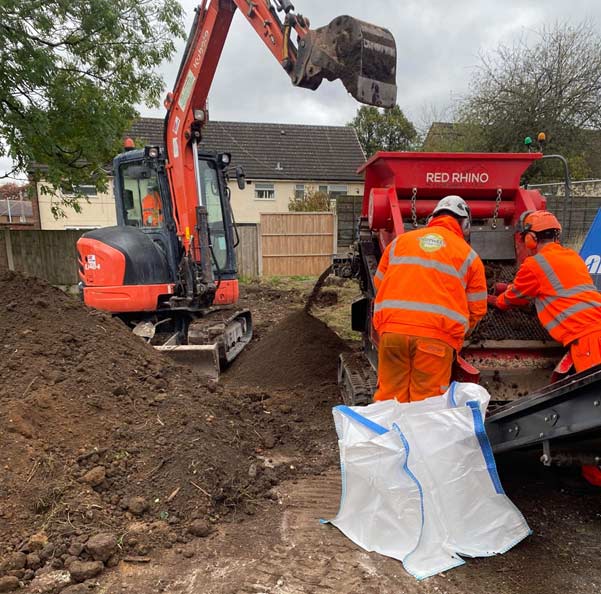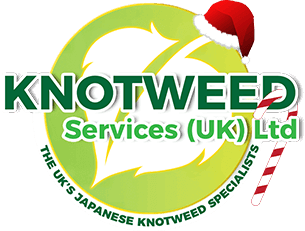JAPANESE KNOTWEED REMOVAL Kington
1
LIVE KNOTWEED JOBS IN Kington
33
SUCCESSFUL KNOTWEED REMOVAL PROJECTS IN Kington
100%
SUCCESSFUL PROPERTY SALES AFTER TREATMENT
1
Kington BASED KNOTWEED STAFF
NO OTHER JAPANESE KNOTWEED COMPANIES IN Kington HAVE OUR TRACK RECORD
At Knotweed Services, we’re committed to delivering: cost-effective Japanese knotweed removal & treatment, rapid response times and professional customer service. Whatever the Japanese knotweed problem in Kington, we’re here to help.
We’re a member of the PCA, a government-approved trade body for the damp and waterproofing industries. Any PCA member can be relied on to deliver exceptional treatment techniques and methods for Japanese knotweed removal.
Knotweed Services, we are a company with the goal to help people with knotweed problems. We have completed large and complex eradications in and around Kington and England.
Overview of Japanese Knotweed
Japanese knotweed is one of the most aggressive plants in the UK. It spreads quickly and has the potential to damage buildings, homes, and other property. At Knotweed Services, we conduct detailed surveys to detect how invasive your Japanese knotweed is. We provide detailed quotes and plans, giving you an accurate assessment of the situation and recommendations for any necessary action.
If Japanese Knotweed is on your commercial land or property, projects on that land may be delayed until you deal with the infestation correctly and legally.
Prevent this Pest from taking over a Property
- Japanese knotweed can grow through tarmac and concrete, posing a structural threat to your building.
- Lenders often won’t lend against a building where Japanese Knotweed has been identified.
- Knotweed grows so thickly as to block visibility and access to paths, highways, and other infrastructure. Knotweed is a particular nuisance for commercial properties.
For customers in Kington with Japanese Knotweed, we should be your very first call. We’ll always ensure that the knotweed is removed in its entirety and our warranty guarantees (insurance backed guarantee available) against regrowth.



FREE IDENTIFICATION
Fill in the form below, attach your pictures and we’ll let you know if the plant in your picture is Japanese Knotweed.
Call us today to undertake the treatment and management of your knotweed problem in Kington
Call us on: 0121 725 6348 or 0800 689 4146 for an immediate cost
Knotweed Services will walk you through the process from start to finish.
RESIDENTIAL JAPANESE KNOTWEED REMOVAL Kington.
WHAT YOU NEED TO KNOW ABOUT JAPANESE KNOTWEED REMOVAL Kington
As Japanese knotweed infestations vary considerably from property to property, treatment and control will too. Knotweed removal may require one method or several methods.
We survey your knotweed problem and use the most effective methods for each growth stage, which allows us to deliver high-quality results that will produce a long-term solution. Our methods go beyond chemical treatments to identify root problems and prevent any future occurrences.
— JAPANESE KNOTWEED REMOVAL OPTIONS AVAILABLE IN Kington

FOLIAR SPRAYING *
The most common treatment for Japanese Knotweed is the spraying of powerful chemicals with a knapsack. We make sure that other plants aren’t damaged. The best time to spray Japanese Knotweed is in the spring.

FOLIAR LEAF WIPING *
With this Japanese knotweed treatment, our chemicals are “physically wiped” into the leaves of the Japanese knotweed using a device. This application is so accurate that we can frequently employ a greater chemical concentration.

STEM INJECTION
We inject the invasive weed with a small dose of herbicide. This is the most cunning elimination technique since it involves injecting chemicals right into the Japanese knotweed. It is not affected by the weather.

BIOMASS REDUCTION
Biomass is a type of excavation and removal, but instead of extracting all of the Japanese Knotweed-affected soil, we simply remove the afflicted soil. It is an outstanding Japanese Knotweed control strategy that enables for soil reuse. Reducing landfill usage.

CROWN REMOVAL
Crown and stems can regenerate, and even small bits of chopped crown or stem can regenerate and become a new invasive weed; eliminating these from the equation is a fantastic method.
— COMMERCIAL TREATMENT OPTIONS AVAILABLE IN Kington

SOIL SCREENING
A tried-and-true technique applied to hundreds of sites around the UK
The rhizome material from Japanese knotweed is removed from the soil material using the screening technique. After that, the Japanese knotweed waste is either moved to a permitted landfill at a significantly lower disposal rate or burned on the spot under a D6 exemption from the Environment Agency or Natural Resources Wales.
In order to avoid getting in the way of construction, the cleansed soils can subsequently be utilised elsewhere, typically in soft landscaping areas.
Due to fewer truck travels to the landfill, this can greatly lower the costs associated with the landfill and the backfill. It can also assist minimise the carbon imprint on the property.

BIOSECURITY SUPERVISION
We can provide a biosecurity operative to monitor any excavations or movement of Japanese knotweed-containing soil on your property.
As part of these measures, we can set up a place at the entrance to the site where people can wash their boots and machines. We will provide all toolbox talks for the main contractor on site, which will be signed by all contractors involved in the operation on site.
We can provide temporary geotextile barriers in areas where biosecurity is required.
Once the work has been completed, we will provide the client with a full biosecurity report.
This method can be used in conjunction with other treatment methods on site.

EXCAVATION AND DISPOSAL
This treatment method is ideal where time constraints are present and there’s no other option other than to remove both the Japanese Knotweed and contaminated soil to a registered landfill.
By removing all traces of the infestation quickly, this offers a rapid solution to your problem and allows your commercial project to begin groundwork’s almost straight away. When time is of the essence, there is no quicker Japanese Knotweed removal/treatment method.
Any waste taken off-site will be done so with a licensed waste carrier to a suitably authorised landfill site.

CELL BURIAL
Cell burial comprises of moving Knotweed contaminated soil from one location on site, burying it in an excavated pit which is lined with a root barrier membrane, in a different position on the site.
The burial requirements for Japanese Knotweed are as follows:
- The Environment Agency recommends that the top of the burial cell should be a minimum of 2 metres below ground level.
- The overall depth of the burial pit should be in excess of 5 metres deep. All root barrier seams are welded together forming an encapsulated cell from which the Japanese Knotweed cannot escape. Clean soil is then used to backfill on top of the cell.
- To prevent accidental disturbance of the burial site, it is recorded on all site plans and future land owners should be made aware of the location.

STOCKPILE & TREAT
Bunding is the method of relocating contaminated Japanese Knotweed soil to a different area of the site being treated. A bund is a shallow area of the contaminated soil, typically 0.5m deep.
The bund can either be raised, on top of the ground, or placed within an excavation to make the surface flush with the surrounding area.
The purpose of the bund is to move the Japanese Knotweed to an area of the site that is not used. This ‘buys time’ for treatment that would not be possible where the Japanese Knotweed was originally located.

HERBICIDE APPLICATION
At Knotweed Services we can provide the client with bespoke treatment plans depending on the locations of the Japanese knotweed.
These plans can work in conjunction with other methods of treatment where access is limited to pedestrian movements i.e., embankments or existing pathways within a site.
This will normally consist of up to 3 visits per annum to apply herbicide by either foliar spray technique or stem injection during the growing season over a period of 3 years, with a monitoring period of 2 years thereafter.
We would select the appropriate herbicides depending on the surrounding foliage or environmental constraints.
After each visit a full treatment record would be provided with photos showing the progress of the works and then an annual report.
